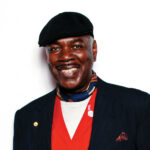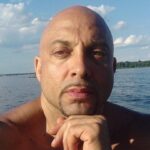On May 29, 2015, Visual AIDS presented METAPHORS & THEIR DISTEMPER at the Whitney Museum of American Art. Below, Visual AIDS Artist Member Orlando Ferrand revisits his reading for the program and the constellation of inspirations and responses evoked by the evening of readings considering diagnosis, disease, coping and wellness.
METAPHORS AND THEIR DISTEMPER REVISITED
by Orlando Ferrand
“The sharing of joy, whether physical, emotional, psychic, or intellectual, forms a bridge between the sharers which can be the basis for understanding much of what is not shared between them, and lessens the threat of their difference.”
“Poetry is not only dream and vision; it is the skeleton architecture of our lives. It lays the foundations for a future of change, a bridge across our fears of what has never been before.”
~Audre Lorde
METAPHORS & THEIR DISTEMPER marks the crystallization of a profound period of reflective creativity in my life and artistic career. When I got the invitation from Programs Manager Alex Fialho to be part of this event, organized by Visual AIDS with Gregg Bordowitz and Pati Hertling at the Whitney Museum of American Art’s new building, I had somehow in my mind already arranged beforehand the selection of poems I wanted to share with an audience. Was this one of those “signs” I get every now and then, acting as catalyst for an ever buoyant internal series of implications?
I have not been at ease since the day of my HIV diagnosis in the spring of 1995, at the present luxury apartment complex space that was once the Saint Vincent’s Hospital, right in the epicenter of the AIDS pandemic in New York City. Perhaps due to a combination of good luck, strong genes and the imperative need to change, I was labeled a long-term slow progressor. I was able to navigate stigmatization with a sense of psychological defiance without apparent difficulties. However, many of my close friends were not as lucky.
I remember one day looking around in my studio apartment on Ninth street and Second Ave, in one of those moments when life seemed to have drifted through my fingers like wax on the altar of false prophets, and realizing that most of those absolutely gorgeous, creative, and talented friends that had been part of my creative niche were not around anymore. We were college students. We were writers and artists. And we were dying. Unfortunately, by the time the protease inhibitors were approved by the FDA and became accessible to almost anyone who needed them, I had already buried or cremated most of my friends and lovers.
The ever haunting question, “Why them?” had been piercing my thoughts, accompanied quite often by another even more haunting question, “When is it going to be me?” As the years passed, I found myself going less often to clubs, after-hours, funerals and memorial services, and attending more poetry readings and gallery openings. But the phantom of AIDS was still hanging over New York City like an apocalyptic premonition.
I managed to finish graduate school in the last year of the 20 th century. I was tired of tending bars in the East and the West villages. I was tired of temp jobs in mediocre publications, translating sensationalist news and editing the work of writers who didn’t take showers or change clothes for weeks. I was also tired of some fancy corporate America jobs I had been able to hold on to, regardless of an insidious depression that, unattended, had already become my most loyal companion.
Between my newly found support groups, keeping journals as a desperate attempt to cling to life, and applying my writing and communication skills, first to the Advocacy department, and later to the Marketing and Development department at Housing Works, I started to feel as if my life had acquired a whole new set of values impregnated with meaning.
But the 9/11 attacks put the city in a state of dis-ease that rivaled the conundrums of the AIDS crisis for several months: the sudden and unexpected passing of loved ones, Lower Manhattan’s metamorphoses into a makeshift cemetery, and the empathy that can only be birthed in moments when the sanctity of life can no longer be guaranteed. I too was crumbling to the ground like the towers. Opportunistic infections and the skyrocketing of my viral load had deteriorated my physical foundation and seemed on the verge of taking me out.
I remember the feeling of absolute vulnerability. I had managed to remain treatment naïve by maintaining a CD4 level above 200, but that biological stoicism was about to change abruptly. I don’t think I was as afraid of dying as I was of physical modification; of changing body shape, of being attacked by the irreversible terrorist redistribution of body fat and all the visual obscenity that constitutes the physical aspect of advanced HIV infection, as well as the impact of toxic chemical compounds. I was, indeed, terrorized by the virus.
A doctor who had seen it all at Saint Vincent’s Hospital put me on my first antiretroviral regimen. He saved me from vanity and death. Having to take meds every day for the rest of my life made the relationship with my dis-ease tangible. I don’t think that I would have survived without art in my life. HIV had become as real as writing poetry, short stories, and plays. Many times painting and writing were the only outlets I had to avoid thinking about side effects. I had to take a leave of absence from work on a regular basis to be able to manage them. Little by little my metaphors were gestating their own distemper.
Art saved me from the rage of an alcoholic father during my childhood years. And it also saved me from dying in the midst of the AIDS epidemic. When the overwhelming feeling of loneliness extended its heavy wings upon me, and nothing made sense anymore, I always found refuge in my journals. In those hundreds of pages that became the life source of many poems and drawings, I came to realize that there was, after all, a bigger dis-ease that I needed to conquer if I were to stay alive. Staying alive for the sake of creativity became my most subversive act, defying the dis-ease of mortality. Art not only became my survival anchor but also my grounds for atonement.
I have seen the geography of New York City undergo a series of transformations reminiscent of the constant cycle of ease and dis-ease. Perhaps, after all, health and illness are related to one another the same way light and shadow have always engaged in their everlasting danse macabre.
Walking down Gansevoort Street on my way to the Whitney, the thought of metaphors embracing instead of fighting their distemper as an act of finite transcendence engulfed my mind. If someone had told me that I would be meandering the streets of the Meatpacking District, again, I would have burst out laughing. As the negative associations were seized and overcome by the refreshing breeze blowing from the Hudson in the hot spring evening, I realized that the healing properties of art and writing, in particular, escape the confinement of traditional therapy. The pragmatism of cognitive therapy is essentially different from the holistic nature of creativity. I was ready to do more healing through art that evening.
Visual AIDS is a repository of healing. By supporting and creating opportunities for the dissemination of creative work of artists afflicted by HIV like myself, it also creates a space for commonality. That’s precisely what took place on May 29 th on the 3rd floor of the Whitney Museum of American Art at the Susan and John Hess Family Theater.
My first diagnosis was that of being an artist, which equaled being gay, “You are an artist,” my father told me with disdain, and walked away. I was six years old. That diagnosis carried its own set of undesirable symptoms: misunderstanding, rebelliousness, and chronic unhappiness. It also came along with stigma, which predisposed me to feeling isolated and hypersensitive. The diagnosis was associated with the notion of the Bohemian artist as a form of universal cliché for the artistic condition. Consequently, I assumed I was in the grip of an incurable dis-ease.
Historically, creative writers—especially poets—have been linked to bad omens, mental illness, suffering; we’ve been paired with dis-ease. When I realized that the writers I admired the most either went mad, committed suicide or both, I had already been taking care of my fractured self out of necessity. I don’t know exactly when the burden of living was lifted, but I do know that I wrote without ceasing everywhere, under any circumstances, and eventually life got a lot better.
One thing I learned from writing is that there comes a time when all masks fall off of their own gravitational pull. All chronic illnesses are as enigmatic as they are romanticized, thus we need to expose this element if we are pursuing healing through writing. Eventually, I know that the aesthetic quality of my work is directly proportional to my catharsis.
But it doesn’t stop there. The second part of the healing process takes place when we share it with an audience because in that moment, we create the opportunity for communal healing. We extend an invisible, yet tangible hug to the audience with the vibration of every sound in every letter, word, line, stanza. And, in return, we receive the gift of empathy.
As a spectator, I experienced a range of feelings, emotions and thoughts that went from “uncomfortable” to “hilarious” during the unique and dazzling performances of my fellow artists and authors Gregg Bordowitz, Morgan Bassichis, Park McArthur, Stacy Szymaszek, and Frederick Weston. Gregg gave me vowel sounds disembodied from poetic discourse, and the most thought provoking letter I’ve heard to ponder on. Morgan gave me back the laughter and took me from the Chelsea High Line to a Cuban childhood I had buried deep inside. Park looked at me with her vivid eyes and gave me the cherished fun-loving side of Audre Lorde during her last days. Stacy gave me the longest intimate poem in one fearless breath. Weston gave me the sound and rhythm of the night and the body collage.
Besides the cordial salutations in our encounter while preparing for the show, and the familiarity of their names associated with the diversity of their creative visions, I didn’t really know any of them personally. But I left the theater more in touch with my core feelings, more accepting of myself and others, and with more love in my heart than when I came. Such is the miracle that takes place during moments of shared vulnerability. And this is the main reason why we still continue to tell stories. Perhaps, we’ll all get to see the day when we’ll start to tell our stories about AIDS by saying, “Once Upon a Time.”
ORLANDO FERRAND is a Cuban-American award-winning poet, writer and multidisciplinary artist. Ferrand is a Visual AIDS Artist Member. He is a graduate of City College, Columbia University and Parsons. A professional member of PEN American Center, he received the 2015 Artist in Community Grant from NYSCA/BCA, and the BRIO Award for Excellence in Poetry from the Bronx Council on the Arts in 2014. His memoir, Apologia: Cuban Childhood in My Backpack, received a 5-stars rating by Readers’ Favorite in 2012, and was selected as the Book-of-the-Semester by Hostos Community College, CUNY, in the spring of 2012. He is the author of three poetry collections, a memoir, several plays, and has contributed to various anthologies of poetry and creative non-fiction. He teaches creative writing at various colleges and universities in New York, and works as an editor, literary translator, script supervisor, script analyst and writer's coach for several independent and studio film production houses.












